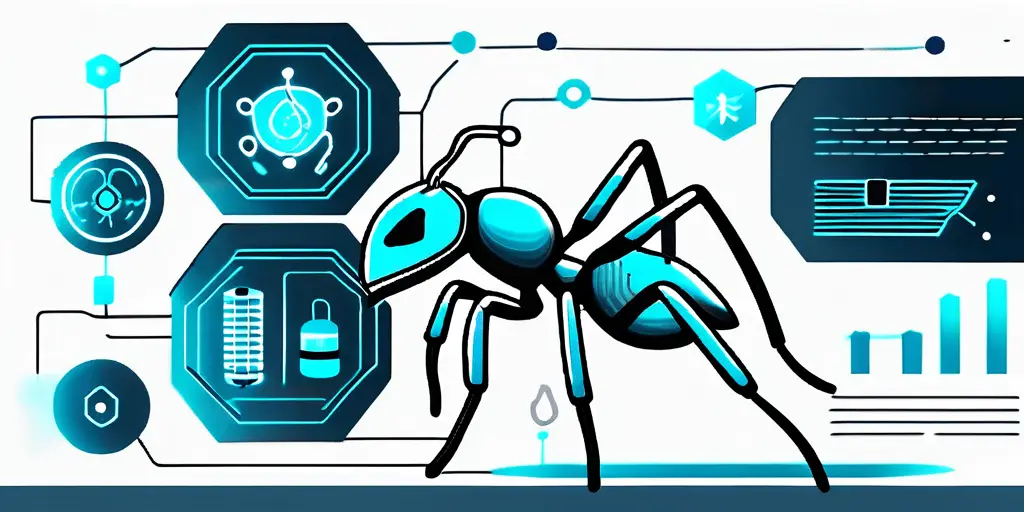In today’s rapidly advancing technological landscape, the use of wireless medical devices has become increasingly prevalent. These devices, such as ANT/ANT+ medical devices, play a vital role in the healthcare sector, revolutionizing patient care and enabling real-time monitoring and data collection. However, with this technology comes the risk of cyber threats and attacks, which can have severe implications for patient safety and privacy. In this article, we will explore the importance of cybersecurity in healthcare and discuss strategies for enhancing the protection of ANT/ANT+ medical devices.
Understanding the Importance of Cybersecurity in Healthcare
With the growing reliance on wireless medical devices, the need for robust cybersecurity measures has never been more critical. These devices, which utilize ANT/ANT+ technology, allow healthcare professionals to monitor patients remotely, collect vital health data, and ensure prompt medical intervention. However, they also create a new avenue for cybercriminals to exploit vulnerabilities and gain unauthorized access to sensitive patient information.

The Role of ANT/ANT+ Devices in the Medical Field
ANT/ANT+ devices have become integral to the medical field, providing healthcare professionals with valuable insights into patient health and facilitating remote monitoring. These devices are widely used in applications such as activity trackers, heart rate monitors, blood pressure monitors, and glucose meters. The seamless integration of these devices into healthcare systems enhances patient care by allowing for prompt interventions and continuous monitoring of vital signs.
The utilization of ANT/ANT+ technology has revolutionized how healthcare professionals interact with patients. In the past, doctors and nurses had to rely solely on in-person visits to assess a patient’s condition. Now, with these wireless medical devices, healthcare providers can monitor patients remotely, reducing the need for frequent hospital visits and allowing patients to recover in the comfort of their homes.
The Potential Risks of Cyber Threats in Healthcare
Despite the numerous benefits of ANT/ANT+ medical devices, they also introduce potential risks in terms of cybersecurity. Cyber threats in the healthcare sector can range from data breaches and identity theft to manipulating patient records and even disrupting critical medical services. The ramifications of these attacks can be far-reaching, compromising patient safety and confidentiality.
One of the main concerns in healthcare cybersecurity is the unauthorized access to patient information. Personal health records contain sensitive data, including medical history, medications, and social security numbers. If this information falls into the wrong hands, it can lead to identity theft, insurance fraud, and other malicious activities.
Cybercriminals can exploit vulnerabilities in wireless medical devices to gain control over them. This can result in manipulating patient data, altering vital signs, or even causing harm to patients by tampering with medical equipment remotely. Such attacks jeopardize patient safety and erode trust in the healthcare system.
The Anatomy of Cyber Attacks on Medical Devices
Understanding the different types of cyber attacks that can target ANT/ANT+ medical devices is crucial in developing effective cybersecurity strategies. Cybercriminals employ various tactics to exploit vulnerabilities and gain unauthorized access to these devices, compromising patient safety and privacy. Let’s take a closer look at some of the common types of cyber attacks:
In addition to the common types of cyber attacks mentioned above, it’s important to highlight the growing concern around insider threats within healthcare organizations. These threats involve malicious actions taken by individuals with legitimate access to medical devices, such as employees or contractors. Insider threats can pose a significant risk to patient data security and device integrity, as these individuals may abuse their privileges to compromise systems from within.
Common Types of Cyber Attacks
1. Malware Attacks: Malicious software, such as viruses, worms, and ransomware, can be injected into medical devices, enabling cybercriminals to gain control and manipulate device functionality.
2. Denial of Service (DoS) Attacks: By flooding a device or network with overwhelming traffic, DoS attacks disrupt normal operations, rendering medical devices inaccessible or non-functional.
3. Man-in-the-Middle (MitM) Attacks: In MitM attacks, cybercriminals intercept and alter the communication between medical devices and healthcare systems, potentially modifying or accessing sensitive data.
Expanding on the discussion of cyber attacks, it’s essential to recognize the emerging threat landscape posed by ransomware specifically targeting healthcare institutions. Ransomware attacks involve encrypting critical data or systems and demanding a ransom for their release. The healthcare sector’s reliance on uninterrupted access to patient information and medical devices makes it a prime target for ransomware attacks, underscoring the need for proactive security measures.
The Impact of Cyber Attacks on Patient Safety
When cyber attacks are successful, the consequences for patient safety can be severe. Medical devices compromised by cybercriminals can provide inaccurate readings or even be manipulated to administer incorrect treatments or medications. The potential for harm to patients is significant, emphasizing the urgency of robust cybersecurity measures.
Strategies for Enhancing Cybersecurity
To mitigate the risks posed by cyber threats on ANT/ANT+ medical devices, healthcare organizations and manufacturers must adopt proactive cybersecurity strategies. Here are some key strategies for enhancing cybersecurity:
In addition to the strategies mentioned above, another crucial aspect of enhancing cybersecurity in the healthcare sector is conducting regular cybersecurity training and awareness programs for all staff members. It is essential for employees to be educated on the latest cyber threats, phishing scams, and best practices for data protection. By fostering a culture of cybersecurity awareness, healthcare organizations can empower their employees to be vigilant and proactive in safeguarding sensitive information.
Implementing Strong Authentication Measures
One of the fundamental aspects of a robust cybersecurity framework is the implementation of strong authentication measures. Healthcare organizations should adopt stringent access controls, requiring multi-factor authentication and regular password updates. Additionally, biometric authentication, such as fingerprint or facial recognition, can further enhance security.
Regular Software Updates and Patches
Keeping medical devices up to date with the latest software updates and patches is crucial in addressing vulnerabilities and protecting against potential cyber attacks. Device manufacturers and healthcare organizations should establish processes for regular updates and ensure that patches are promptly applied.
Conducting regular cybersecurity risk assessments and penetration testing on medical devices can help identify potential weaknesses in the system. By proactively testing for vulnerabilities, healthcare organizations can strengthen their cybersecurity posture and prevent potential breaches before they occur. Collaborating with cybersecurity experts and ethical hackers can provide valuable insights into improving the overall security of medical devices.
Regulatory Standards and Guidelines for Medical Device Cybersecurity
Recognizing the growing importance of cybersecurity in healthcare, regulatory bodies and industry organizations have developed standards and guidelines to ensure the safe and secure use of medical devices. Let’s take a look at some of the key regulatory standards and guidelines:
FDA Guidelines for Medical Device Cybersecurity
The U.S. Food and Drug Administration (FDA) has published guidelines to assist medical device manufacturers in addressing cybersecurity considerations during the design and development stages. These guidelines emphasize the importance of risk assessments, secure coding practices, and ongoing device security monitoring.
The FDA encourages collaboration between manufacturers, healthcare providers, and cybersecurity experts to enhance the overall security posture of medical devices. This collaborative approach helps identify potential vulnerabilities and implement effective mitigation strategies to protect patient data and ensure the uninterrupted delivery of healthcare services.
International Standards for Medical Device Security
In addition to FDA guidelines, international standards organizations, such as the International Electrotechnical Commission (IEC) and the International Organization for Standardization (ISO), have developed standards specific to medical device security. Compliance with these standards ensures that medical devices meet stringent cybersecurity requirements.
These international standards focus on the technical aspects of cybersecurity and address the importance of establishing a comprehensive cybersecurity management system within organizations involved in the development and deployment of medical devices. By following these standards, manufacturers can demonstrate their commitment to safeguarding patient information and maintaining the integrity of healthcare systems worldwide.
Future Perspectives on Cybersecurity in Healthcare
Given the ever-evolving nature of cyber threats, staying ahead of the curve is crucial by exploring emerging cybersecurity technologies and strategies. Here are some future perspectives on cybersecurity in healthcare:

Emerging Cybersecurity Technologies
Advancements in technologies such as artificial intelligence (AI), machine learning, and blockchain have the potential to revolutionize cybersecurity in healthcare. AI and machine learning algorithms can detect anomalies and patterns in network traffic, enabling the identification of potential cyber threats in real-time. This level of proactive monitoring can significantly enhance the security posture of healthcare organizations, ensuring the protection of sensitive patient data.
Blockchain technology, with its decentralized and tamper-proof nature, can enhance data integrity and security. By leveraging blockchain, healthcare systems can create an immutable patient data record, making it nearly impossible for cybercriminals to manipulate or tamper with the information. This added layer of security can provide patients with peace of mind, knowing that their medical records are protected from unauthorized access.
The Role of AI and Machine Learning in Cybersecurity
Another area of exploration is the integration of AI and machine learning into cybersecurity frameworks. These technologies can assist in developing predictive models and enhance threat detection and response capabilities. By continuously analyzing vast amounts of data, AI and machine learning algorithms can identify behavioral patterns and anomalies, enabling proactive cybersecurity measures.
For instance, AI-powered systems can learn from historical cyber attack data and identify common attack vectors, allowing healthcare organizations to fortify their defenses against known threats. Additionally, machine learning algorithms can adapt and evolve as new cyber threats emerge, ensuring that healthcare systems remain resilient despite evolving attack techniques.
Conclusion
The future of cybersecurity in healthcare holds immense potential. By embracing emerging technologies such as AI, machine learning, and blockchain, healthcare organizations can strengthen their cybersecurity posture and safeguard patient data. Healthcare organizations, device manufacturers, and regulatory bodies must prioritize cybersecurity and implement robust measures to protect patient safety and privacy. By understanding the anatomy of cyber attacks, adopting proactive strategies, and exploring emerging technologies, we can enhance the cybersecurity of medical devices and ensure the continued delivery of safe and reliable healthcare services.
As the healthcare industry continues to evolve with ANT/ANT+ medical devices at the forefront, the imperative for robust cybersecurity measures has never been greater. Blue Goat Cyber, a Veteran-Owned leader in cybersecurity, offers unparalleled expertise to safeguard your medical devices against the ever-present threat of cyber attacks. Our comprehensive services, including medical device cybersecurity, penetration testing, and adherence to HIPAA and FDA standards, are designed to protect and empower your healthcare operations. Don’t let cyber threats undermine the safety and privacy of your patients. Contact us today for cybersecurity help, and partner with Blue Goat Cyber to secure your digital health environment with confidence and precision.


